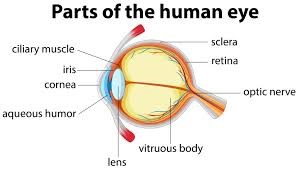Dwyer & Ross Optometrists
266 Oxley Avenue
Margate, QLD 4019
Australia

It progresses slowly and without symptoms. As one of the leading causes of irreversible blindness in Australia, it is estimated that over 300,000 Australians have glaucoma, but 50% are undiagnosed. Early detection and adherence to treatment are vital to slow the progression of glaucoma.
Glaucoma is hereditary. You are ten times more likely to develop glaucoma if you have a direct family member with glaucoma.
It’s time to talk to your family about family history.
Glaucoma refers to the progressive damage to the optic nerve which carries vision information from the eye to the brain. The eye produces a clear fluid known as aqueous humor.
This liquid nourishes the eye and holds the eye in shape. As new fluid is produced, it drains out through the anterior chamber angle.
If there is damage to this drain mechanism, the rate of production of the aqueous humor becomes greater than the rate the eye can drain it, causing high Intra-ocular pressure.
This increased pressure begins to damage the optic nerve which lies at the back of the eye.
The optic nerve is made up of approximately one million nerve fibres which connect the back of the eye to the brain. Damage to the cells of the optic nerve results in irreversible damage to your eyesight.

At first, Glaucoma usually doesn’t have any symptoms. There is no pain or discomfort and visual changes may not be recognised until the disease has progressed. As the disease progresses, symptoms may include:
Early detection and treatment of this condition can prevent or delay vision loss. As there are no early signs or symptoms of this disease, regular eye health checks are essential. Only an optometrist or an ophthalmologist can determine whether you have glaucoma or not.
During a glaucoma exam your eye health practitioner will:
The combined results of the above tests will determine the diagnosis of glaucoma. No single test can lead to a diagnosis.
Early detection and an appropriate treatment plan will minimise the damage to vision caused by glaucoma.
For more information: https://www.glaucoma.org.au/